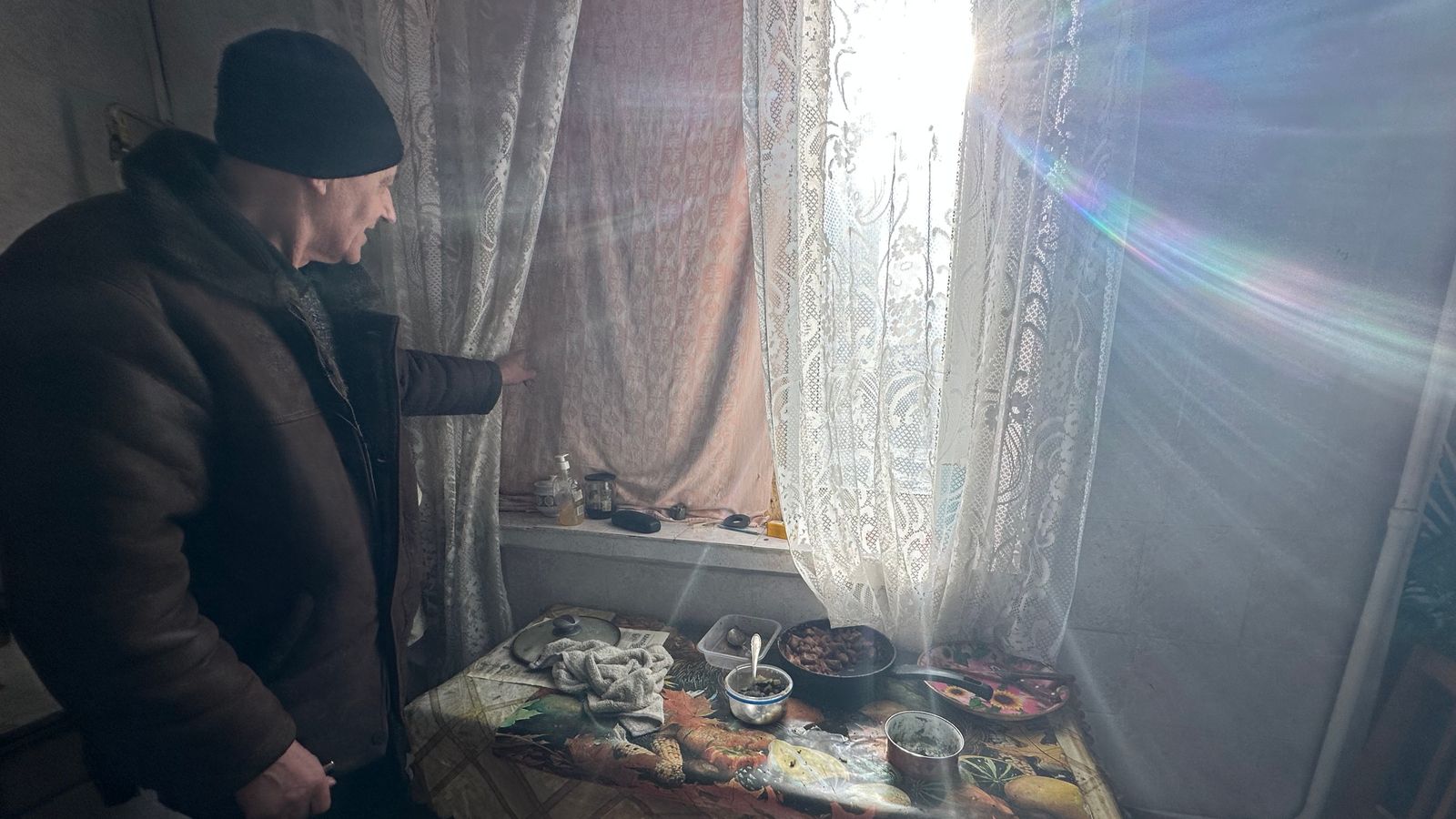A year on and Saltivka remains a broken place. Broken buildings, broken infrastructure and in the grip of this cruel winter, broken people.
Roman Myboroda, 37, has not stopped his aid deliveries to the residential suburb of Kharkiv, Ukraine’s second city, just 20 miles from the Russian border.
The area has been relentlessly shelled and huge holes remain in the buildings where 40,000 people once lived.
Ukraine war: China says ceasefire is ‘top priority’ as UN holding emergency session – latest updates
When we last met him, he only made trips in his small white van during the morning as the Russian attacks intensified in the afternoon.
Today, we meet him at lunchtime, an indicator that the threat has now subsided.
But even with the Russian advance beaten back and the hourly thump of incoming and outgoing fire no longer punctuating the eerie silence, there is a fear that it could soon happen all over again.
Ukraine war: Baby’s clothes left strewn across road after fleeing family caught up in Russian fire near Kharkiv
It is clear the terror remains for the handful of people still enduring extraordinary hardship and desperate conditions.
Anatolii Lymarenko has a face worn by war. He is 61 years old and the only person still living in his badly-damaged nine-storey block of flats.
It is a hard climb to the seventh-floor place he still calls home. The view from every window is identical buildings with similar scars from missile attacks. The building feels even colder than the sub-zero temperatures outside.
Anatolii has what looks like a deeply unsafe mains gas supply to cook, and soup to keep him going. But there is no heating, no hot water and the toilet does not work because the cistern water froze and it cracked.
But, despite it all, he stayed. “I have nowhere else to go,” he says. He has no family to take him in and admits “it’s scary to be on your own. But when there’s no shelling, though, it’s bearable”.
A certificate of long service where he used to work at a factory is on display in a cabinet in Anatolii’s bedroom-cum-living room. There are now construction cranes dotted around Saltivka in an attempt to rebuild what has been lost.
But we leave Anatolii watching his own breath in front of an old television with barely a signal. Our presence suddenly boosts the antenna and noisy jazz comes to life on the screen.
It is an odd juxtaposition – a film noir caricature – of Putin’s war, not against the Ukrainian military but against the Ukrainian people.
While taking their share of donated supplies nearby, a group of women are eager to show us a flat destroyed by Russian fire, where missiles went through the floor and where the lives of neighbours came to an end.
Living next door to the burnt-out shell of this blackened apartment is 71-year-old Nellia Chuber, who has often thought about leaving but instead stays with her bedridden husband Petro.
“I am worried, of course I am – we listen to the news and we don’t want it to happen again.”
They do, at least, have heating in this block, but her fear is that if the Russians try to take the city again, she must get herself and her husband down many flights of stairs to the cramped basement bunker still readily stocked with candles, water and prayer books.
A foot of snow covers the children’s playground abandoned for almost 365 days. The brightly-coloured climbing frames and see-saws are untouched: it’s hard to see the appeal of getting on a swing in front of the rubble of collapsed buildings.
This is what war has done to Saltivka – to its few remaining people – to the spirit of what they say used to be a happy place.








